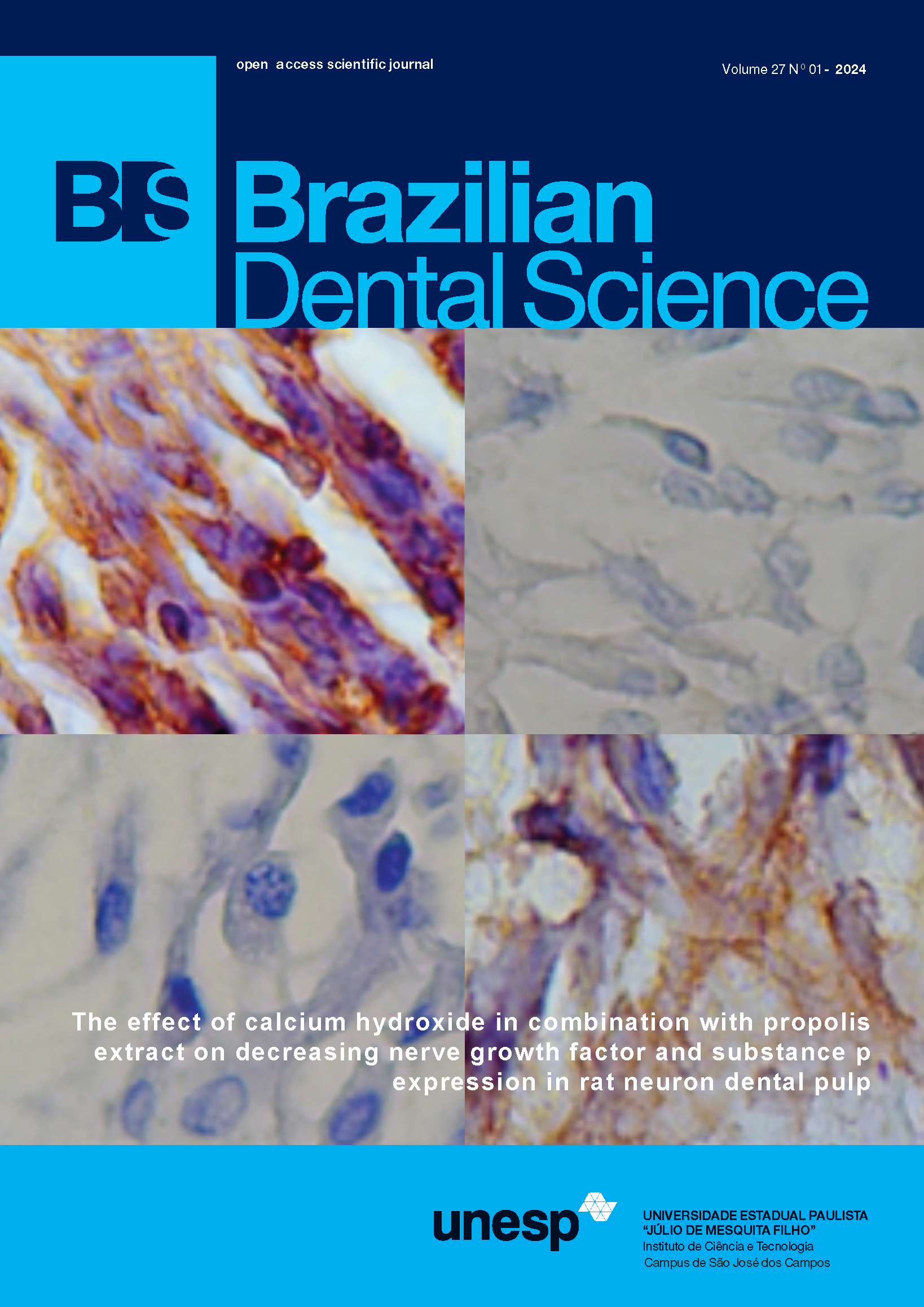Marginal gap of zirconia and lithium disilicate frameworks produced by the CAD-CAM technique through a comparator microscope – in vitro analysis
DOI:
https://doi.org/10.4322/bds.2024.e4154Abstract
Objective: The aim of this study was to evaluate the marginal gap of frameworks produced using the CAD-CAM system, from zirconia and lithium disilicate blocks, adapted to a tooth preparation and a gypsum die. Material and Methods: For this study, a human first molar tooth was used as a master model with a full crown preparation. It was molded 20 times to obtain the gypsum die and randomly divided into 2 groups (n=10) for the fabrication of zirconia and lithium disilicate frameworks. The frameworks were made using pre-sintered zirconia blocks and lithium disilicate blocks, both CAD-CAM systems. The marginal gap was measured in µm at four points (buccal, palatal, mesial, and distal) using a comparator microscope with 30x magnification, with the framework seated on the master model (tooth), and on the gypsum die. Marginal gap data (µm) were evaluated using two-way analysis of variance and Tukey’s test with a significance level of 5%. Results: The results showed that there was no statistically significant interaction between the factors studied (p=0.223) or isolated factors (ceramic factor p=0.886 and die factor p=0.786). Conclusion: Both ceramics produced using the CAD-CAM technique did not exhibit statistical differences in marginal adaptation on the two types of substrates, both on tooth preparation and on the gypsum die.
KEYWORDS
CAD-CAM; Dental ceramics; Dental prosthesis; Lithium disilicate; Marginal adaptation; Zirconia.
Downloads
Published
How to Cite
Issue
Section
License
Brazilian Dental Science uses the Creative Commons (CC-BY 4.0) license, thus preserving the integrity of articles in an open access environment. The journal allows the author to retain publishing rights without restrictions.
=================




























